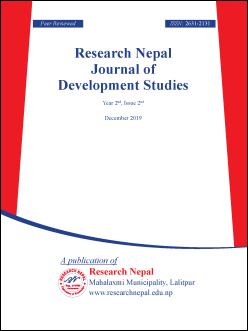The Role of Nepalese Political Parties in Democracy (1990-2018)
DOI:
https://doi.org/10.3126/rnjds.v2i2.29286Keywords:
Political Policies, DemocracyAbstract
This research paper analyzes the role of political parties in the democratic period of 1990-2018. This period was dominantly ruled by Nepali Congress and Nepal Communist Party (NCP)-United Marxist Leninist (UML). This paper explores how the major political parties revisited their political policies and diversified their scope after the second people’s movement (SPM) as a way to address the pressure exerted by the inclusion agenda forwarded by the then Nepal Communist Party-Maoist. After the king assumed direct executive power through a political coup, the coalition of the parliamentarian parties knows as Seven Party Alliance and the rebelling Maoist party reached a twelve-point understanding which consequently led to declare Nepal a democratic republic with a parliamentary system of governance. But the intraparty feuds and the ideological divides between the democratic and the communist parties remain.
Downloads
Downloads
Published
How to Cite
Issue
Section
License
© Research Nepal
Authors will be required to transfer their copyright to Research Nepal.




